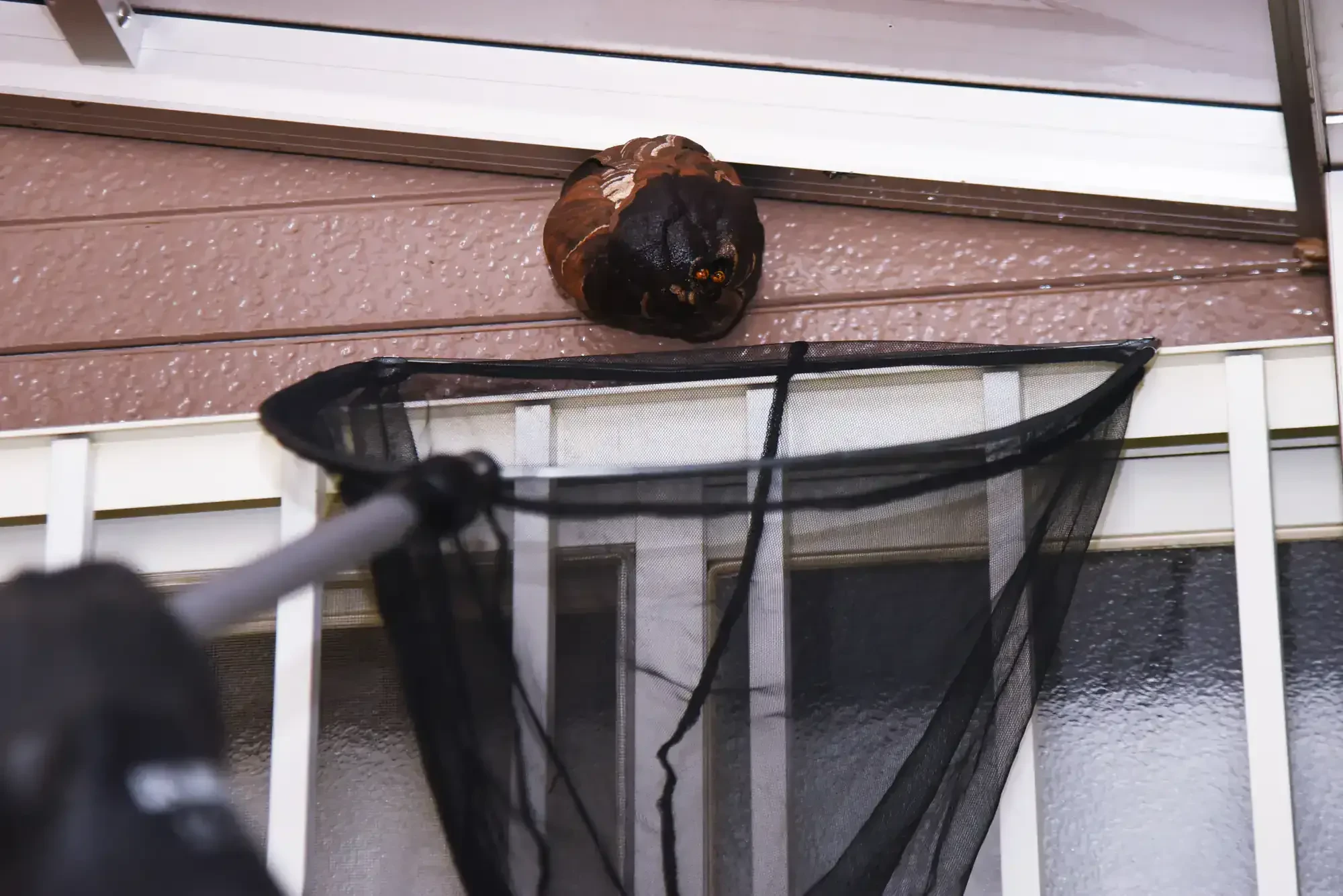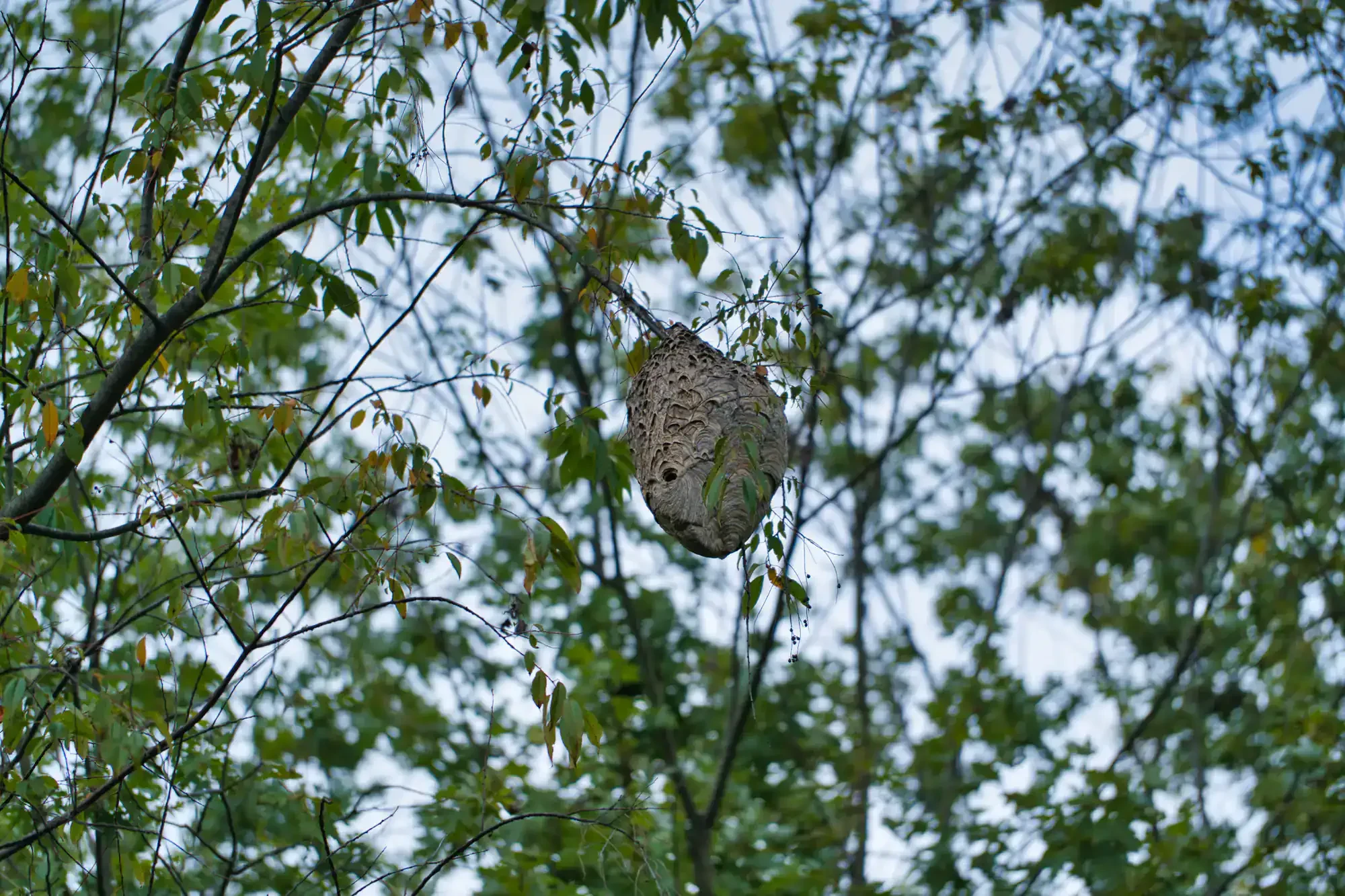
Hear from Our Customers

When yellow jackets take over your property, you lose access to your own outdoor space. Kids can’t play in the yard. Family barbecues become dangerous. Even simple tasks like mowing the lawn turn into potential emergency room visits.
Our yellow jacket extermination process eliminates the entire colony from the source. We don’t just spray the surface and hope for the best. We locate the nest, treat it completely, and ensure the queen, workers, and larvae are eliminated to prevent regrowth.
You get your property back. Your family can use the yard safely. Outdoor entertaining becomes enjoyable again instead of a constant worry about who might get stung.
We’ve been serving Flushing, MI since 2005. Roger brings 26 years of hands-on experience to every yellow jacket removal job, and we understand exactly how these aggressive pests behave in our local area.
Flushing residents deal with peak yellow jacket activity from late summer through early fall, when colonies reach their maximum size of up to 5,000 members. These aren’t the small nests you might see in spring – by August and September, you’re dealing with massive underground colonies that will aggressively defend their territory.
We’ve earned recognition from Angie’s List and Home Advisor because we do things differently. You get the same experienced technician every time, not part-time college students learning on your property.

First, we locate the nest. Yellow jackets in Flushing typically build underground in abandoned rodent burrows, but they also nest in wall voids, under eaves, and in dense vegetation. Finding the exact location is crucial because surface treatments won’t reach established colonies.
Next, we treat the entire colony using professional-grade insecticide dust and aerosol products. Our state-certified technicians wear full protective bee suits and can treat nests up to 25 feet high. Unlike most companies that can only work at night, our equipment allows us to schedule treatment at your convenience without costly after-hours charges.
Finally, we remove the nest when safe and monitor for any remaining activity. If yellow jackets return, we come back at no charge. The job isn’t finished until your property is completely safe for your family.

Ready to get started?
Your yellow jacket extermination service includes thorough property inspection, complete nest treatment, and follow-up monitoring. We handle both ground nests and aerial nests, including those hidden in wall voids that other companies often miss.
Flushing’s location in Genesee County means dealing with Eastern and German yellow jackets that become extremely aggressive during late summer. These species can sting multiple times and will attack with little provocation when their nests are threatened. By August and September, colonies house thousands of individuals actively scavenging for food around homes and outdoor dining areas.
Our treatment process targets the entire colony lifecycle. We eliminate the queen to prevent new egg production, destroy worker populations that defend the nest, and kill larvae before they can mature. This comprehensive approach prevents the regrowth that happens when only surface treatments are used.

Yellow jacket season peaks in late August through September in Flushing, when colonies reach their maximum size of up to 5,000 members. During this time, yellow jackets become extremely aggressive as they shift from hunting insects to scavenging for sugary foods around homes.
This behavioral change means more encounters with humans around garbage cans, outdoor dining areas, and picnic tables. The combination of larger colony size and increased aggression makes late summer the most dangerous time for yellow jacket stings. Colonies that were manageable in spring become serious threats requiring professional removal.
Michigan State University entomologists confirm this is when most emergency calls occur, as disturbing even a small area near a ground nest can trigger dozens of wasps to attack simultaneously.
Most yellow jacket emergencies in Flushing can be addressed within 24-48 hours of your call, often same-day for urgent situations involving high-traffic areas or family safety concerns. Unlike companies that can only work at night, our professional equipment allows us to schedule treatment at your convenience.
The actual treatment process typically takes 1-2 hours depending on nest location and size. Ground nests require different techniques than aerial nests or those hidden in wall voids. Our technicians carry specialized equipment for treating nests up to 25 feet high safely.
Complete elimination usually occurs within 24-48 hours after treatment, but we monitor activity and return at no charge if any yellow jackets remain active. The goal is complete colony elimination, not just temporary reduction.
Yellow jackets can sting multiple times and become extremely aggressive when their nests are disturbed. Unlike bees that sting once and die, yellow jackets can attack repeatedly and will bite to hold onto their target while stinging. Their venom causes intense pain that can last hours, followed by days of swelling and itching.
Ground nests are particularly dangerous because they’re often hidden in lawns where one wrong step during mowing or yard work can trigger dozens of stings. Wall void nests pose different risks – attempting DIY removal can force yellow jackets to chew through drywall into living spaces.
For people with allergies, yellow jacket stings can cause life-threatening reactions requiring emergency medical treatment. Even non-allergic individuals can experience serious complications from multiple stings, especially children and elderly family members.
Yellow jackets don’t reuse old nests, but new queens often return to favorable nesting areas year after year. If your property had a yellow jacket problem this season, there’s a strong chance you’ll see activity in the same general area next spring when new queens emerge from winter hibernation.
This happens because the conditions that attracted the original colony – shelter, food sources, and suitable nesting sites – remain unchanged. Properties with wood piles, dense vegetation, or underground spaces like abandoned rodent burrows are particularly attractive to yellow jacket queens scouting for nest locations.
We also recommend preventive treatments in early spring to catch new queens before they establish colonies, and our professional treatment includes identifying and addressing these attractant conditions to reduce the likelihood of future infestations.
Yellow jackets that nest in wall voids can cause structural damage by chewing through building materials to expand their colonies. Unlike carpenter ants that excavate wood, yellow jackets create paper nests from chewed wood fibers mixed with saliva, but they’ll chew through drywall, insulation, and other materials to access suitable nesting spaces.
The bigger concern is attempting DIY removal of wall void nests. Sealing the entrance before eliminating the colony forces yellow jackets to find alternative exits, often chewing through interior walls into living spaces. This creates immediate danger for family members and can result in significant repair costs.
We use specialized techniques and equipment for treating wall void nests. We never seal entrances until the entire colony is eliminated, and we ensure complete nest removal to prevent future structural issues or indoor invasions.
Complete yellow jacket extermination includes thorough property inspection to locate all nest sites, professional treatment using commercial-grade insecticides, and follow-up monitoring to ensure complete elimination. Our state-certified technicians use full protective equipment and can safely treat nests up to 25 feet high.
The service covers both ground nests and aerial nests, including those hidden in wall voids, under eaves, or in dense vegetation. We use targeted treatment methods appropriate for each nest type and location, ensuring the queen, workers, and larvae are all eliminated to prevent regrowth.
You also receive written service guarantees and free callbacks if yellow jacket activity continues after treatment. We don’t consider the job complete until your property is safe for family use and outdoor activities can resume without concern about aggressive stinging insects.